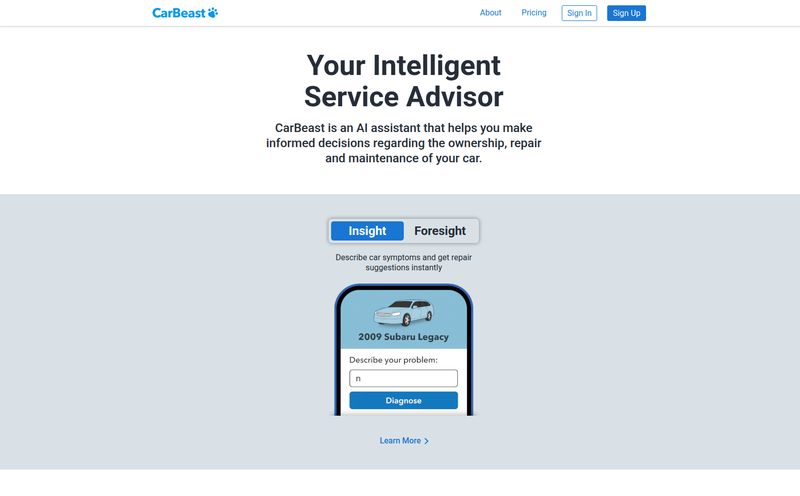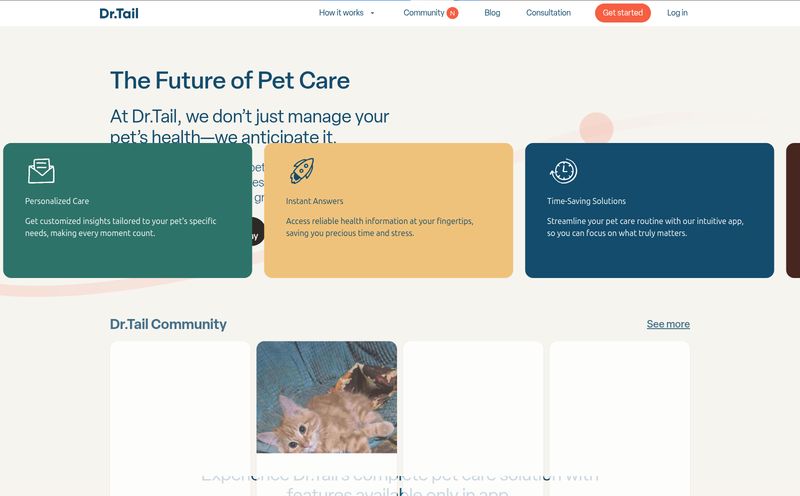I’ve been in the SEO and digital marketing world for what feels like an eternity. I've seen fads come and go, tools rise and fall, and I’ve learned to be a healthy skeptic. So when I kept hearing whispers about something called “Thinking-Claude,” I did what any good digital detective does: I went searching.
And I found… a 404 page. Yup. A “This page could not be found” error. Honestly, it was the perfect start. Frustrating? A bit. But it made me want to know more. What was this ghost of a platform? Was it a failed startup? A super-secret project?
It turns out, the answer is a lot more interesting. Thinking-Claude isn’t really a product you buy or a website you log into. It’s an idea. A philosophy. A new way of talking to our AI assistants, specifically Anthropic’s Claude, that’s less about commands and more about conversation.
So What is This Thinking-Claude Approach?
Let's get this straight first: this isn't some shiny new app you download. It's a methodology. At its heart, the Thinking-Claude approach is about one simple, powerful request: asking the AI to show its work. Think back to high school math class. You didn’t just get points for the right answer; you had to show the steps you took to get there. That’s this, but for large language models.
Instead of just asking Claude for, say, a marketing strategy, you ask it to first lay out its internal monologue. Its thought process. You prompt it to consider the audience, the goals, potential pitfalls, and the creative angles before it even starts writing the final output. It's like asking a master chef to talk you through why they chose saffron instead of turmeric, rather than just handing you the finished dish. You get the meal, but you also get the masterclass.

Visit Thinking-Claude
This method focuses on making the AI's reasoning transparent, transforming the black box of AI into a glass one. It’s a shift from just extracting information to genuinely collaborating with a thinking partner.
Why You Should Absolutely Bother With This
I can hear some of you already. “More work? I just want the answer!” I get it. We’re all busy. But hear me out. Forcing the AI to articulate its reasoning process has some pretty amazing side effects.
Deeper Insights and Higher Quality
When an AI has to justify its choices, it often makes better ones. I’ve found that by asking for the 'thinking' part, the final output is more nuanced, creative, and better aligned with my actual intent. The AI catches its own potential misinterpretations. For instance, when asked to draft an email, it might first think, “Okay, the user wants a friendly but professional tone. I should avoid jargon but still sound knowledgeable. I'll start with a pleasantry, state the main point clearly, and then suggest next steps.” Seeing that process allows you to redirect it before it goes off track. It's a game-changer for complex tasks.
Building Trust in Your AI Co-Worker
The whole “AI is a black box” thing is a real issue. We feed something in, something comes out, and we kind of just have to trust it. The Thinking-Claude method demolishes that wall. When you see the logical chain—the 'A led to B led to C'—you can actually trust the result. Or, even better, you can spot a flawed premise and correct it. It’s about moving from blind faith to informed collaboration.
How to Actually Put This Into Practice
Okay, theory is great, but how does this look on a Tuesday afternoon when you’re on a deadline? It’s all in the prompt. You have to be more deliberate. Here’s a simple comparison:
Standard Prompt: “Write three social media posts about the benefits of drinking water.”
Thinking-Claude Style Prompt: “I need three social media posts about the benefits of drinking water. Before you write them, I want you to use a <thinking> block to outline your strategy. In your thinking, consider the target platform (Instagram), the tone (upbeat and motivational), and three distinct angles you could take for each post. After you’ve shown me your thought process in the thinking block, then write the three posts.”
See the difference? That second prompt invites the AI to be a strategist, not just a content-producing machine. Using tags like <thinking> and </thinking> or <scratchpad> and </scratchpad> is a common technique in advanced prompt engineering to help the model organize its own thoughts separately from the final answer. It’s surprisingly effective.
Is This Just for Prompting Geeks?
Fair question. And the answer is no, but with a caveat. This approach isn't for everything. If you’re just asking for the capital of France, you don’t need an AI’s inner monologue about geopolitics. It’s overkill.
Some might argue that it’s inefficient, and for simple, factual queries, they’re right. It takes a few extra seconds to write the more detailed prompt. But in my experience, for any task that requires creativity, strategy, or nuanced understanding, the time you invest upfront saves you tons of time in editing and re-prompting later. It's the old 'measure twice, cut once' philosophy for the AI age.
It's also important to note that this isn't about benchmarking or mathematical breakthroughs. You won't see Thinking-Claude topping leaderboards for solving complex equations. That's not the point. The benefit is entirely subjective and qualitative—it’s about how much better your personal and professional interactions with the AI become.
Connecting the Dots to the Bigger AI Picture
This whole idea, while it has a catchy name, taps into a much larger and incredibly important field in AI development: Explainable AI (XAI). For years, the big brains at places like DARPA and top universities have been trying to figure out how to make AI systems less opaque. As these models get integrated into everything from medicine to finance, we need to understand why they make the decisions they do.
The Thinking-Claude approach is basically a grassroots, user-level application of that principle. We, the everyday users, are demanding a bit of explainability from our tools. And that’s a powerful trend. I fully expect that in the near future, this kind of meta-cognitive functionality will be a built-in feature of all major models, not just a trick you have to coax out with clever prompting.
Frequently Asked Questions
- Is Thinking-Claude a software or an app I can download?
- Nope. It’s a method or a philosophy for how you write your prompts for Claude. There’s nothing to buy or install, which is honestly refreshing.
- Can I use this thinking method with ChatGPT or Gemini?
- Absolutely! While the name is specific to Claude, the underlying principle of asking an AI to show its reasoning works with most advanced conversational AIs. You might just need to tweak your phrasing a bit.
- Is there any cost associated with this?
- Zero. Zilch. Nada. The only cost is the few extra moments it takes you to craft a more thoughtful prompt.
- So why does the Thinking-Claude website show a 404 error?
- That’s the million-dollar question! It could be a project that was planned and abandoned, or maybe it’s just a concept that took on a life of its own through word of mouth. My personal guess? The idea was more powerful than any website could ever be, and it just spread organically among users. The mystery is part of the charm.
- What is the single biggest advantage of using this method?
- Transparency. Hands down. Seeing the “why” behind the AI’s “what” gives you unprecedented control and insight, leading to much higher-quality, trustworthy results on complex tasks.
Final Thoughts
In a world racing to build faster, bigger, and more powerful AI models, the Thinking-Claude approach is a gentle reminder that the quality of our interaction matters just as much as the raw capability of the tool. It's about shifting our mindset from being a passive user to an active collaborator.
Give it a try on your next complex query. Ask Claude to think out loud. You might be surprised at the conversation you end up having. I know I was.
Reference and Sources
- Anthropic's Claude - The AI model this approach is named for.
- DARPA's Explainable Artificial Intelligence (XAI) Program - For those interested in the formal research behind AI transparency.



